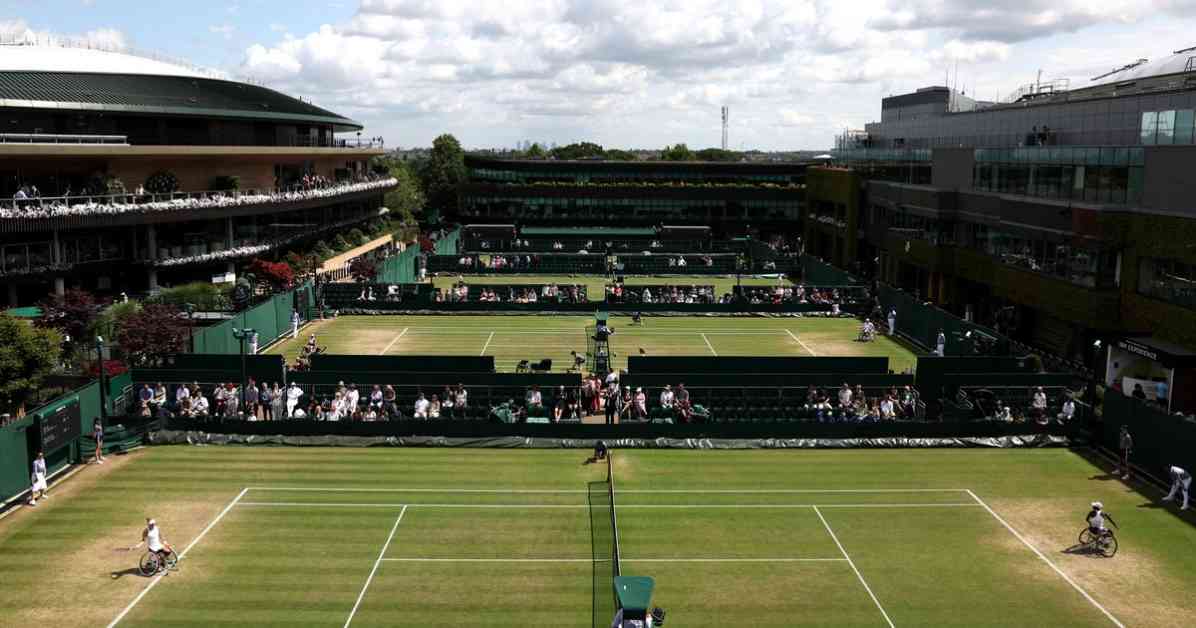Plans to construct an 8,000-seater stadium and 38 grass courts in Wimbledon have finally been given the green light by the Deputy Mayor of London after a three-year battle. The decision, announced on September 27 at the Greater London Assembly (GLA), marks the end of a contentious planning saga that has captured public attention for years.
The approval for conditional planning permission means that the All England Lawn Tennis Club (AELTC) can now proceed with its ambitious plans to develop the site of a former golf club opposite its current location in Wimbledon. The AELTC believes that this project will bring about the most significant sporting transformation in London since the 2012 Olympic Games.
Debbie Jevans, the chair of AELTC and a former tennis player, expressed her optimism about the approval, stating, “Hopefully this means a lot for local people, I’m one of them. What it does is give us an opportunity to open up an extra park, and to promote more education at our stadium and within the clubhouse. It will bring more eyeballs to Wimbledon, which is great.”
The decision to support the construction of the stadium and courts was based on the Deputy Mayor’s recognition of the significant economic benefits that the project would bring, as well as the importance of maintaining Wimbledon’s status as a premier tennis tournament. According to AELTC, the development is projected to contribute £336.02 million to the UK economy annually.
During the lengthy meeting at City Hall, supporters and opponents of the project engaged in heated debates on various issues related to the proposals. Environmental concerns and AELTC’s pledge to enhance public access to the parkland site were among the key points of contention.
Members of the Save Wimbledon Park (SWP) group voiced their fears about the detrimental impact of the plans on the protected parkland, which holds Metropolitan Open Land Status. Putney MP Fleur Anderson cautioned that the decision could set a dangerous precedent for the Green Belt nationwide, emphasizing that local residents would be the ones to suffer from the development.
Wimbledon MP Paul Kohler criticized Merton Council and AELTC for their lack of transparency and collaboration with the community, pointing out the discrepancy between AELTC’s initial commitment to recreational use of the land and its current plans for expansion. Despite acknowledging some negative environmental consequences, the Deputy Mayor deemed the public benefits of the project to be significant enough to justify approval.
AELTC’s proposal includes the creation of a new 23-acre public park that will be accessible to the public year-round, except during the three-week championship period. The club’s primary objective for expansion is to host the qualifying round of the championships on-site and maintain the tournament’s elite status. Currently, the qualifier rounds are held at a separate location in Roehampton, which AELTC leases.
The initial plans for the project were approved by Merton Council in 2023, subject to certain conditions, but faced opposition from Wandsworth Council shortly afterward. A revised bid was submitted to the GLA, leading to the decision to grant planning permission by the Deputy Mayor. The revised plans include the creation of additional public parkland and a reduction in on-site parking to promote active travel.
To mitigate environmental impact, AELTC has committed to revitalizing the parkland, including de-silting and de-culverting the lake, preserving veteran trees, and restoring the historic Capability Brown landscape. The club also plans to distribute thousands of free tennis tickets to local schoolchildren and collaborate with the Merton Schools Sports Partnership to promote sports engagement.
Despite the approval of the project, members of the SWP group expressed disappointment and vowed to continue their efforts to challenge AELTC’s plans. Susan Cusack, the leader of SWP, reiterated the group’s commitment to working with AELTC and potentially pursuing a judicial review of the decision. She emphasized the need for further dialogue and detailed assessment of the economic and environmental implications of the project.
In conclusion, the approval of the 8,000-seater Wimbledon stadium marks a significant milestone in the development of the iconic tennis venue. While the decision has sparked both excitement and concern among stakeholders, the future of Wimbledon’s sporting legacy and environmental impact remains a subject of ongoing debate and scrutiny.












